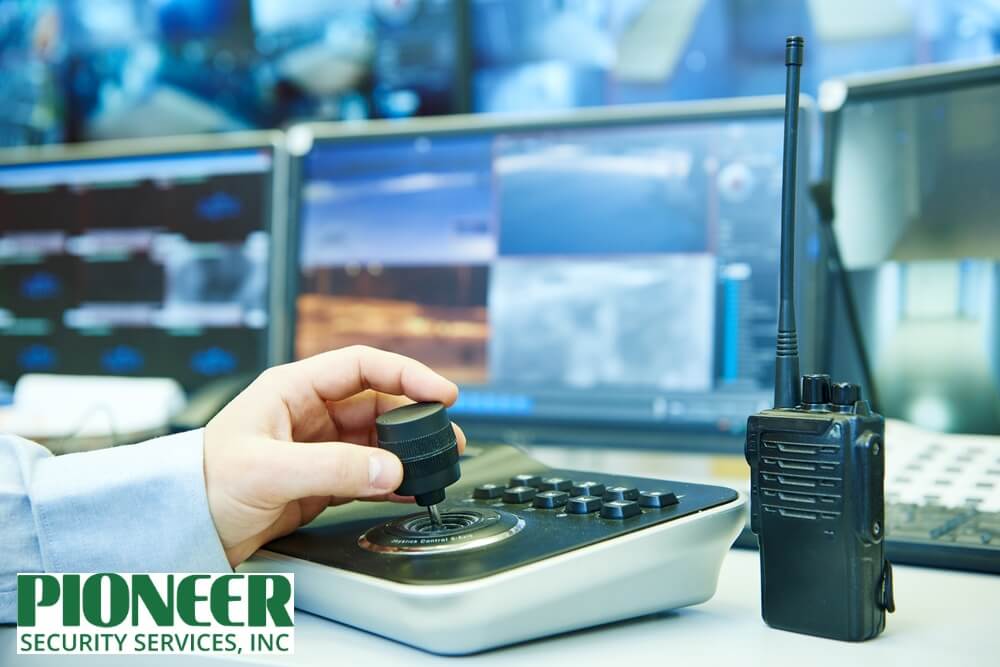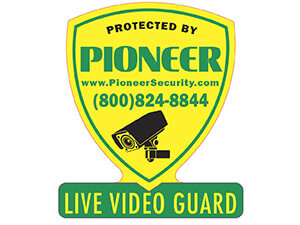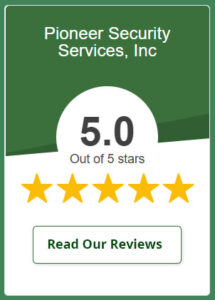Live video monitoring is the real-time observation of surveillance cameras by trained security professionals or AI-driven systems. Unlike traditional CCTV setups that only record footage for later review, live monitoring is proactive, allowing threats to be identified and acted upon as they unfold. This distinction makes it a critical upgrade for homeowners, businesses, and communities that want to prevent incidents instead of just documenting them after the fact.
Here’s how it works: strategically placed security cameras capture live footage and stream it to a monitoring center, cloud platform, or AI-powered dashboard. Operators or AI systems then analyze the video for unusual activity such as loitering, forced entry, or suspicious movement. If a threat is detected, alerts are sent instantly to homeowners, security personnel, or law enforcement.
The demand for such proactive security solutions is rapidly increasing. According to Mordor Intelligence, the global video surveillance systems market, valued at USD 91.66 billion in 2025, is projected to grow to USD 163.13 billion by 2030, driven by the rise of AI-powered monitoring and real-time response technologies. This explosive growth underscores how essential live video monitoring has become in today’s evolving security landscape.
In this guide, we will explore how live video monitoring works, why it has become essential for homeowners and businesses, the technology powering it, and the practical benefits it brings to everyday security.
What is Live Video Monitoring?
Live video monitoring is the real-time observation of security camera feeds by trained professionals or artificial intelligence (AI) systems. Unlike traditional CCTV, which only records events for later review, live monitoring provides immediate detection and intervention when suspicious activity occurs. This proactive approach transforms security from reactive evidence-gathering to active crime prevention.
The process is simple yet highly effective. Cameras are strategically placed around a property, whether residential, commercial, or public, and the footage is transmitted to a monitoring center or an AI-powered dashboard. Here, operators or intelligent software continuously analyze the live feed to identify potential threats such as trespassing, break-ins, or unusual movement patterns. When an incident is detected, security personnel can respond instantly, either by issuing voice warnings through two-way audio systems or by dispatching law enforcement.
This real-time response has proven to be far more effective than traditional surveillance methods. According to research by the Electronic Security Association (ESA), verified alarms, where operators confirm a threat through live monitoring, can reduce false alarm rates significantly, improving law enforcement response times and overall safety outcomes.
Why Live Video Monitoring is Essential in 2025
In today’s world, live video monitoring is essential because security threats and operational risks are more complex than ever. Rising theft, workplace incidents, and growing concerns over liability have made traditional CCTV insufficient. Homeowners want peace of mind, businesses demand protection against loss, and organizations need tools that go beyond passive recording.
Live monitoring addresses these challenges by combining real-time detection with rapid intervention, helping to prevent incidents before they escalate. Theft prevention is a primary driver behind the rise of live video monitoring. Retailers, in particular, face mounting challenges from organized retail crime and other forms of theft that cut deeply into profits.
In 2022 alone, U.S. retailers reported losses exceeding $112 billion due to shrinkage, a sharp increase from $93.9 billion the year before. With shrink rates climbing and theft becoming more sophisticated, businesses cannot rely solely on traditional alarms or passive cameras. Live monitoring offers a proactive layer of protection, enabling real-time detection, deterrence, and faster incident response—making it one of the most effective tools for addressing these escalating risks.
Key Benefits of Live Video Monitoring
Live video monitoring goes far beyond the role of traditional security cameras. Instead of simply recording footage for later review, it provides real-time intervention that can actively prevent incidents from escalating. Below are some of the most impactful benefits that make live monitoring a smart investment in 2025 and beyond.
1. Crime Prevention and Deterrence
One of the most significant advantages of live video monitoring is its ability to prevent crimes before they escalate. Real-time surveillance allows operators or AI systems to identify suspicious behavior, such as loitering or attempted forced entry, and intervene immediately, often with a voice-down warning that deters intruders on the spot. This proactive approach goes beyond traditional CCTV, which only provides evidence after a crime has already occurred.
2. Faster Emergency Response
Because live monitoring provides verified video evidence, operators can quickly determine whether an alarm represents a genuine threat. This ensures law enforcement or onsite teams are contacted only when necessary, reducing the problem of false alarms that plague traditional systems. Verified video alarms have been shown to dramatically improve police response times, increasing the chances of stopping crimes in progress.
3. Cost Savings Over Onsite Security
Hiring full-time security guards can be a significant expense for businesses and communities. According to the U.S. Bureau of Labor Statistics, the mean annual wage for security guards was around $40,440 as of May 2023.
When benefits, training, and overtime are factored in, the total cost rises even higher. In contrast, live video monitoring delivers 24/7 surveillance at a fraction of this expense, typically billed monthly. This makes it a far more cost-effective option for organizations that require continuous coverage without the financial burden of employing multiple guards.
4. Improved Employee and Customer Safety
In workplaces, retail stores, and event venues, live monitoring contributes to a safer environment for both employees and customers. Suspicious activity can be identified and addressed before it becomes dangerous, while emergencies like fights, accidents, or intrusions can be escalated to first responders in real time. This proactive safety net helps businesses foster trust and confidence among staff and patrons alike.
5. Liability and Compliance Support
Beyond crime prevention, live monitoring provides valuable legal and compliance support. Footage can be used to resolve disputes, verify adherence to safety protocols, and protect against fraudulent claims. For regulated industries, monitored video systems also serve as documented proof of compliance with health, safety, and data security standards, reducing both legal risk and reputational damage.
Core Features of Modern Live Video Monitoring Systems
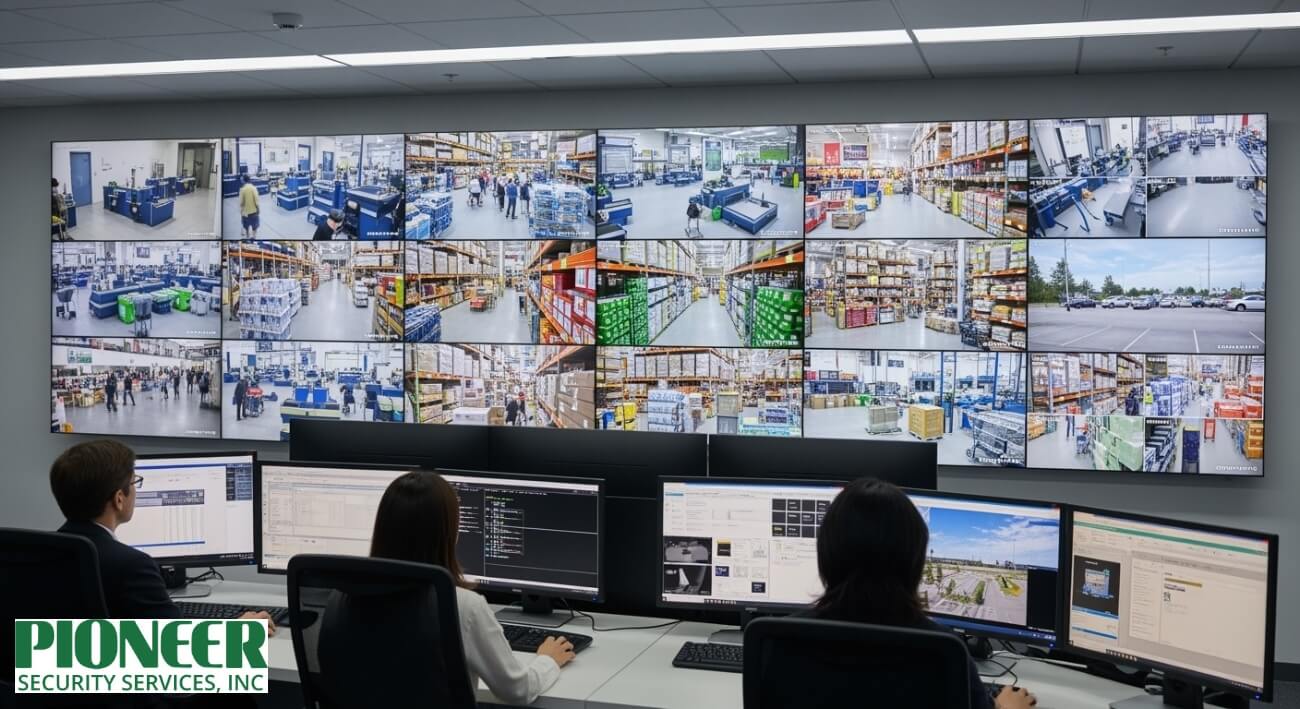
Modern live video monitoring systems combine traditional surveillance tools with advanced technology to deliver reliable, proactive protection. When evaluating a solution in 2025, homeowners and businesses should look for the following key features:
- High-Definition Cameras: Crisp HD or 4K video ensures clear visibility of people, vehicles, and incidents, which is essential for both deterrence and evidence. High-resolution footage also holds up better in court cases or insurance claims, making it more valuable than grainy recordings from older systems.
- Night Vision Capabilities: Infrared and low-light technology allow cameras to capture detailed footage around the clock, even in poorly lit environments. This ensures security doesn’t drop off at night, when the majority of break-ins and suspicious activity tend to occur.
- Motion Detection Sensors: Intelligent sensors trigger alerts only when unusual activity is detected, reducing unnecessary notifications from everyday movements. Many modern systems also allow customization, so users can adjust sensitivity levels or create “zones” for focused monitoring.
- AI Analytics: Advanced AI can identify suspicious behaviors, detect loitering, distinguish between people and objects, and even predict potential threats. Unlike standard cameras, AI continuously learns from data, meaning detection becomes smarter and more accurate over time.
- Cloud Storage and Backup: Cloud-based recording secures video off-site, preventing footage loss due to theft or equipment damage. It also provides flexible scalability, so users can store weeks or even months of footage without worrying about physical storage limitations.
- Remote Access via Mobile Apps: Users can monitor live feeds, receive push notifications, and control settings directly from their smartphones, whether at home or traveling abroad. This level of accessibility gives property owners peace of mind, knowing they’re always connected to their security system.
In 2025, the defining advantage of modern monitoring systems lies in AI-powered automation and predictive technology. Unlike traditional setups that merely record, these systems actively analyze data, identify threats, and enable rapid intervention, making them indispensable for both residential and commercial security.
Applications of Live Video Monitoring
Live video monitoring is not a one-size-fits-all solution. Its adaptability makes it valuable across diverse industries and environments, where it enhances both security and operational efficiency. Here are some of the most common applications in 2025, including recent statistics to show just how urgent the need has become.
Retail and Commercial Security
Retailers are under increasing pressure from theft: stores lost an estimated USD 45.0 billion due to retail theft in 2024, with projections that losses could exceed USD 53 billion by 2027. Real-time monitoring helps prevent shoplifting, employee theft, and customer safety incidents by detecting suspicious behavior quickly, triggering alerts, and allowing operators to intervene before losses escalate.
Construction and Remote Sites
The construction industry faces enormous losses from equipment and material theft. According to the National Equipment Register (NER), approximately USD 1 billion worth of construction equipment is stolen annually in the U.S. alone. Live video monitoring helps protect expensive machinery off-hours, ensures workers are following safety protocols, and supports compliance with safety regulations even on remote or temporary sites.
Residential Properties
Homeowners benefit from live monitoring through burglary deterrence, package theft prevention, and enhanced protection for family members. With increasing e-commerce deliveries, visible cameras and voice-down warnings can dissuade porch pirates and provide evidence when needed.
Healthcare Facilities
Security in healthcare settings is growing more critical: surveys indicate that around 65% of healthcare facilities report theft incidents within their premises. Live monitoring in hospitals or clinics helps control access to restricted areas (like pharmacies), monitor patient safety (especially in wards or dementia units), and provide video-evidence when liability issues arise.
Events and Public Venues
Large public events, stadiums, amusement parks, or festival venues use live video monitoring for crowd control, identifying threats in real time (e.g., unattended items or suspicious groups), and coordinating rapid emergency responses. These systems also help maintain order and safety, improving visitor experience while keeping risk under control.
How AI is Transforming Live Video Monitoring in 2025
Artificial intelligence is no longer just a supporting feature in video surveillance, it is now the driving force behind smarter, faster, and more reliable live monitoring. This shift is transforming live monitoring from a reactive tool into a proactive security solution.
AI-Based Motion Detection
Traditional motion sensors often triggered false alarms from harmless movements like pets, wind, or shadows. Today’s AI-driven motion detection distinguishes between people, vehicles, and environmental factors, drastically reducing false alerts and improving operator efficiency.
Many systems can even learn over time, adapting to specific environments like a busy street or quiet residential area, making alerts more reliable. This ensures operators only focus on genuine security threats, saving time and resources.
Facial Recognition
AI facial recognition allows systems to identify individuals with high accuracy, whether it’s spotting a repeat offender in a retail setting or granting access to authorized personnel in secure facilities. Unlike older systems, modern AI can work in varying lighting conditions and with partially obscured faces.
It also helps automate attendance tracking in workplaces and supports law enforcement by cross-referencing databases in real time. While privacy concerns remain, regulations and ethical use guidelines are helping ensure responsible deployment.
License Plate Recognition (LPR)
AI-powered LPR systems automatically capture and process vehicle plates, helping with gated community access, parking management, or identifying vehicles linked to security incidents. Advanced versions can read plates even at high speeds or in poor weather conditions.
For businesses, this means improved efficiency in logistics, traffic control, and parking enforcement. In law enforcement, it can help track stolen vehicles or vehicles of interest, creating a stronger layer of protection for both public and private spaces.
Behavior Analysis and Anomaly Detection
Machine learning models now analyze patterns of human behavior, such as loitering, crowd formation, or unusual movement routes, and flag activity that might precede theft, vandalism, or violence. This goes beyond traditional monitoring by detecting subtle warning signs before incidents escalate.
For example, someone repeatedly circling a building late at night could trigger an alert before a break-in occurs. This predictive layer of intelligence allows security teams to act preemptively rather than reactively.
Predictive Analytics
Instead of simply reacting to security events, AI leverages predictive analytics to forecast risks based on historical data and live input. For instance, monitoring platforms can detect recurring suspicious visits to a property or track seasonal crime patterns in specific neighborhoods. These insights help businesses and homeowners adjust security protocols proactively. Predictive systems are increasingly being used by smart cities and enterprises to optimize patrols, allocate resources, and prevent security gaps.
Integration with IoT Devices
The rise of IoT has allowed AI-powered monitoring systems to sync with smart locks, alarms, lighting, and sensors. This interconnected ecosystem means that when AI detects a threat, it can trigger immediate, automated responses across multiple devices. For example, lights could switch on, doors could lock automatically, and sirens could sound without waiting for human intervention.
With these advancements, AI is making live monitoring more precise, cost-effective, and forward-looking. The combination of real-time intelligence, proactive alerts, and IoT integration means security teams can stop threats before they happen, not just respond afterward.
Challenges and Limitations
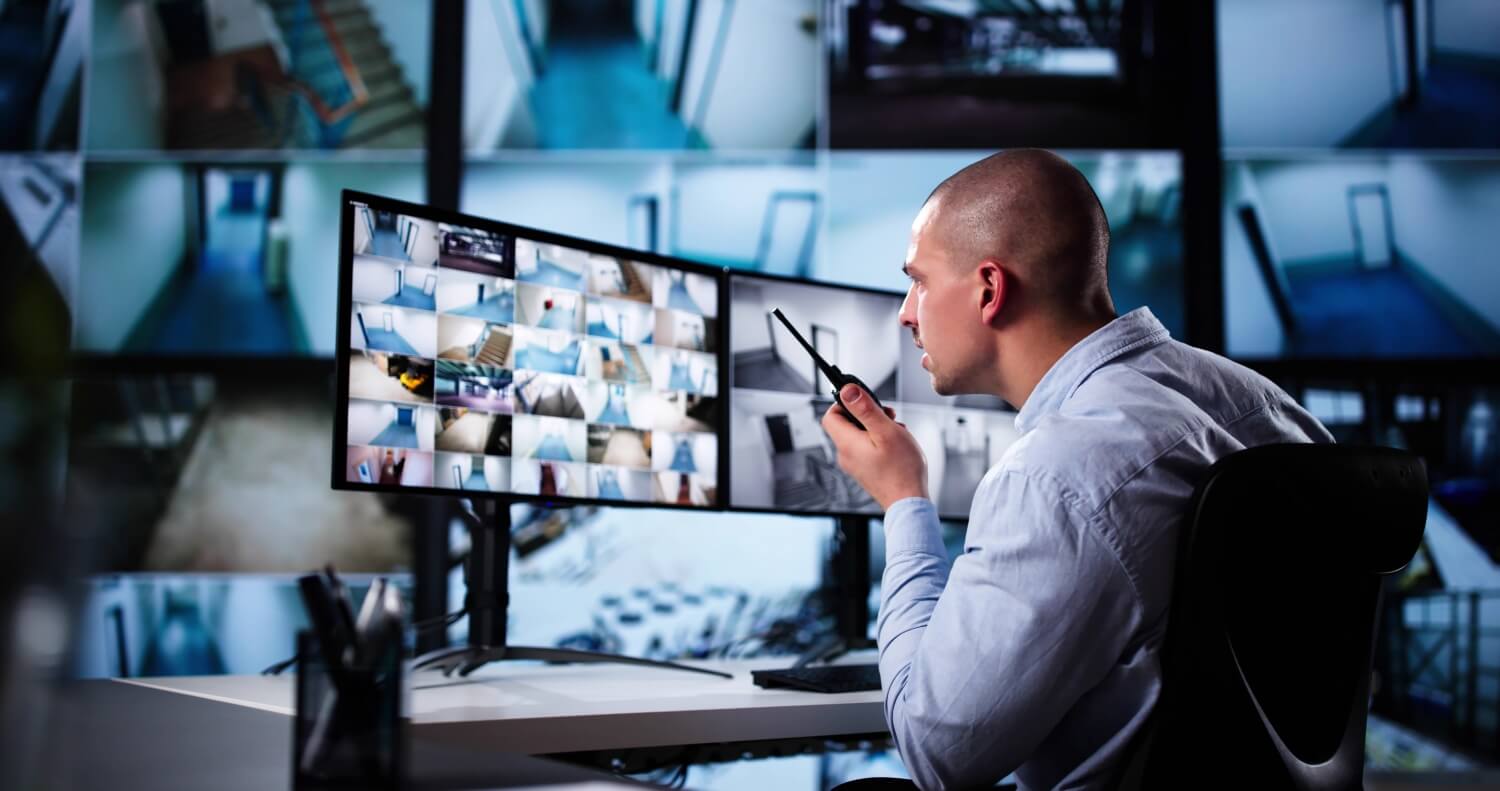
While live video monitoring powered by AI and two-way voice offers undeniable benefits, it also comes with certain challenges that businesses and homeowners should consider. Addressing these limitations is essential for building realistic expectations and ensuring effective, long-term security.
High Bandwidth Requirements
Streaming multiple high-definition cameras in real time requires significant internet bandwidth. In areas with poor connectivity, this can result in lag, reduced video quality, or even downtime. To overcome this, many systems now use adaptive streaming and edge computing to reduce reliance on central bandwidth.
Data Privacy Concerns
With continuous monitoring and AI analysis, privacy remains a top concern. Homeowners and businesses must ensure compliance with regulations like GDPR in Europe or state-level privacy laws in the U.S. Proper camera placement, data encryption, and clear usage policies are key to balancing security with personal privacy.
False Alarms
Although AI reduces false alerts compared to traditional systems, they can still occur due to unusual lighting, animals, or environmental factors. Excessive false alarms may desensitize operators or waste police resources. Continuous system training and combining AI with human verification helps keep accuracy high.
Cost of Advanced Systems
While basic monitoring services are affordable, advanced setups with AI analytics, multiple cameras, and cloud storage can become expensive. For small businesses or homeowners, the upfront investment may feel challenging. However, these costs are often offset by savings in theft prevention, reduced insurance premiums, and long-term security.
Human Error in Monitoring
Even with AI support, human operators remain essential for responding to alerts and handling emergencies. Fatigue, distraction, or misinterpretation can still lead to mistakes. Ongoing training and AI-assisted decision-making are necessary to minimize these risks.
Best Practices for Implementing Live Video Monitoring
To maximize the return on investment (ROI) and ensure adequate protection, businesses and homeowners should follow a set of best practices when deploying live video monitoring:
- Select the Right Service Provider: Choose a provider with proven expertise, reliable uptime, and 24/7 monitoring centers. Look for companies that offer AI-enabled features, two-way audio, and strong customer support. It’s also essential to evaluate service-level agreements (SLAs) to ensure guaranteed response times.
- Ensure Compliance with Privacy Laws: Be aware of local and international regulations such as GDPR in Europe and state-level privacy acts in the U.S. Proper signage, camera placement, and data handling protocols ensure you stay compliant while maintaining trust. Noncompliance can result in fines, lawsuits, and reputational damage, making compliance a financial and ethical necessity.
- Train Security Staff and Operators: Even the best systems require skilled human oversight. Operators should be trained on AI alerts, voice-down techniques, and escalation protocols to maximize deterrence. Regular refresher courses help operators stay sharp and updated on emerging threats.
- Regularly Maintain and Update Equipment: Cameras and sensors must be checked for dust, misalignment, or technical issues. Firmware updates and cybersecurity patches keep systems secure and reliable. Neglecting maintenance can cause blind spots, making the system less effective when it’s needed most.
- Integrate with Existing Security Systems: By linking monitoring with access controls, alarms, and fire detection systems, you create a more holistic security solution. This integration ensures faster response and minimizes gaps in protection.
- Balance AI and Human Oversight: AI excels at analyzing large volumes of data quickly, but human judgment is essential for nuanced decisions. A hybrid approach combines efficiency with contextual accuracy. AI might detect unusual movement, but a trained operator can determine if it’s a harmless delivery or a potential break-in.
Future of Live Video Monitoring
The landscape of live video monitoring is evolving rapidly, with emerging technologies shaping the future of security. One major trend is cloud-based monitoring, which allows scalable, cost-effective storage and real-time access across multiple sites. This is especially valuable for businesses with distributed operations.
Another development is the rise of hybrid human + AI command centers. These combine machine learning algorithms with trained operators to achieve higher accuracy and faster response times. Studies suggest that AI-enhanced monitoring could reduce false alarms by up to 90% compared to traditional systems.
Biometric integration is also expected to expand, particularly facial and voice recognition, to enhance access control and identity verification. Meanwhile, drone-based live monitoring is gaining traction for large outdoor areas such as construction sites and event venues, offering mobile surveillance beyond static cameras.
Finally, predictive security analytics will become a core feature. By learning from past incidents and recognizing early warning signals, AI systems can anticipate risks before they escalate, pushing monitoring from reactive to fully proactive. These innovations make it clear that the future of security is moving toward smarter, faster, and more adaptable solutions that go beyond traditional surveillance.
Secure Your Future with Live Video Monitoring
Live video monitoring has become a must-have security strategy in 2025, offering advantages far beyond traditional surveillance. From deterring crime in real time and lowering false alarms to saving costs on full-time security guards and strengthening compliance, its benefits extend to businesses, homeowners, and entire communities.
By blending AI analytics with human oversight, live monitoring ensures faster responses, enhanced safety, and peace of mind for families and employees alike. Still, successful implementation requires proper planning, reliable technology, and responsible usage to maximize effectiveness.
At Pioneer Security, we specialize in delivering modern live video monitoring solutions that combine advanced AI detection with professional operator support. Our systems are designed to protect properties, reduce risks, and create safer environments for both businesses and homeowners.
If you’re ready to take the next step in upgrading your security, we encourage you to evaluate your current setup and explore how Pioneer Security can provide you with proactive protection today.
Frequently Asked Questions
Is 24/7 live video monitoring the same as traditional CCTV?
No, live monitoring offers real-time oversight by trained operators (or AI systems) who can verify threats and respond immediately. Traditional CCTV typically just records for later review without timely intervention.
What should I ask a video monitoring provider before buying a system?
Important questions include: what is the resolution of the cameras; how are alerts handled; whether the footage is stored locally or in the cloud; whether the system integrates with alarms/sensors; and what kind of support and guarantee the provider offers.
Is live video monitoring affordable for small homes or businesses?
In many cases, yes. Live monitoring can be more cost-effective than hiring full-time physical guards, particularly when factoring in equipment costs, staff wages, and ongoing operational costs.
Can live video monitoring work effectively at night or in low-light settings?
Absolutely. With modern features like IR/night vision, low-light capable cameras, and AI-enhanced detection, live systems can still detect threats and provide alerts even when illumination is limited.
Will video monitoring help me reduce costs from false alarms and wasted response time?
Yes. Verified live monitoring allows operators to review events before dispatching authorities, which reduces false alarms and avoids unnecessary charges or penalties.
How is video stored and accessed, and is the footage secure?
Most modern systems use cloud storage with encryption and redundancy. Users usually have remote access via apps or web dashboards to view live and recorded video. Secure access controls help ensure that only authorized people can retrieve or view footage.

